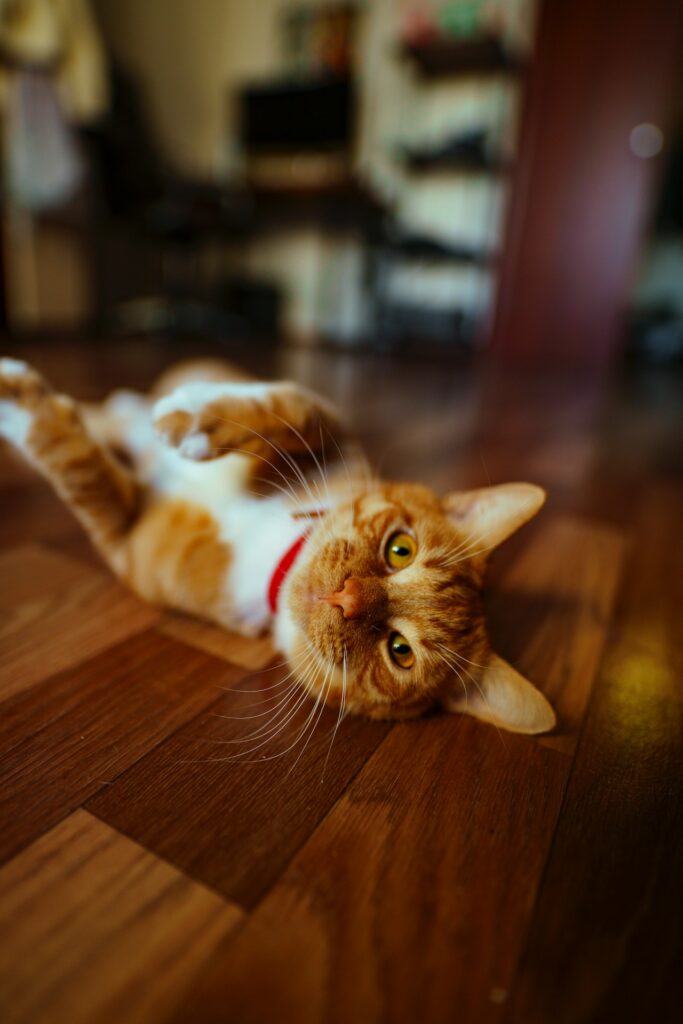Unlock The Meaning Behind Your Cat’s Ear Positions: Learn How to Better Understand Your Feline Friend!
Do you ever wonder what your cat is thinking? Have you ever noticed that your cat’s ears move around in different directions and positions? Believe it or not, cats communicate meaning with the positioning of their ears! With the help of numerous muscles in their ears, cats can rotate them to express emotions from aggression to friendliness. This article will explore how to better understand your feline companion by uncovering the meaning behind each ear position. So if you are curious about why your cat moves its ears in certain ways, read on for an insightful look into the world of cats!
The Meaning of Cat Ear Positions
Cats are known for their subtle and mysterious ways of communication, as well as their unique body language. One of the most recognizable features of a cat’s body language is its ears. The position of a cat’s ears can tell us a lot about its feelings, such as whether they feel alert or relaxed. It is important to understand the meaning behind different cat ear positions so that we can better understand our cats and provide them with the love and care they need.
What Do Cat Ears Tell Us?
Cat ears feature an amazing range of movement. By analyzing the position of a cat’s ears, we can get an idea of their feelings by looking at the angle and direction the ears are pointing. There is no one-size-fits-all answer when interpreting ear positions since each cat may have nuances in terms of how they communicate through its ears. However, some general patterns can be observed when interpreting different ear positions.
Alert Position
When a cat’s ears are alert, this typically means that he/she is paying attention to something or someone. When cats are in this position, their ears will be erect, pointing forward or slightly outward. This position indicates that the cat is paying attention to its surroundings and can prepare itself for possible danger or movement if it detects any unusual environmental stimuli.
Relaxed Position
When cats are relaxed, their ears will be facing backwards or down rather than being pointed forward, like in the alert position mentioned above. This means that the cats do not sense any immediate threat in their environment and can relax without focusing on something that could potentially cause danger or harm them in any way. While this may seem like a good thing for many people, it’s important to note that some cats may remain in this relaxed position even when there is potential danger around them – so always keep an eye out for signs of potential threats even if your cat appears calm and relaxed!
Attentive Position
This ear position looks similar to the alert position mentioned above but with one key difference: instead of being completely erect and pointing forward/outward, only one side (or both) will remain erect while the other side(s) droops down slightly towards the back/side(s). This indicates that while your cat may not feel threatened by something around him/her, they recognize its presence and are ready to take action should it become necessary. Cats who display this attentive ear posture tend to be more aware and responsive than cats who remain completely relaxed with both ears facing down towards their backs/sides at all times; however, just like with any other type of behaviour exhibited by your pet, it’s important to watch out for any changes just in case!
Listening Position
When cats enter listening mode – either due to curiosity or fear – their eyes will glaze slightly as if ‘switched off’, and both ears will tilt sideways so that only one ear faces forwards. In contrast, the other droops down towards its side (similarly to how humans tilt our heads when we want to listen carefully). In contrast with other positions where cats may appear confidant due to erect/forward-facing posture – this particular listening pose tends to portray submission as well as attentiveness combined which can give us clues as to what our furry friends might be trying (or hoping!)to hear from whatever has caught his/her attention!
Common Misinterpretations Of Cat Ear Positions
It’s important not only to look at where a cat’s ears are positioned but also to take into consideration contextual factors such as body language (i.e., overall posture), facial expressions etc., before assuming anything about what your feline friend is thinking/feeling based solely on his/her ear positioning alone – because otherwise, you risk misinterpretation which can lead you astray when attempting understanding what your pet might need from you! Some common misunderstandings include mistaking a ‘listening pose’ for an offensive gesture due to its submission-like characteristics; mistaking an ‘attentive pose’ for contentment because only one side appears erect rather than both sides; mistaking a ‘relaxed pose’ for disinterest because both sides appear dropped downwards; mistaking an ‘alert pose’ for aggression because all four legs appear pointed directly forward which could imply readiness for attack…etc.
Benefits Of Understanding Cat Ear Positions
Awareness of how cats communicate through their body language is beneficial for understanding our pets better and helps us develop stronger bonds between ourselves too! With enough practice observing different types of behaviour exhibited by cats – from tail twitching to ear posturing – you will get a better idea of what your cat is thinking/feeling during any given moment and respond accordingly. You may even start talking in “cat language” with your fur buddy before long!
Conclusion
Cat ear position is a powerful tool of communication that can tell us a lot about our feline friends’ emotional state. You will understand your pet better and develop a deeper bond with them by paying attention to these subtle behavioural changes. So next time you catch your cat twitching its ears or flicking them back and forth – take some time to observe the meaning behind each movement and use it as an opportunity to learn more about your furry friend!
Ensure you protect your cat from unexpected accidents and illnesses by investing in a pet insurance policy with Furrr.co.uk. Our policies provide comprehensive coverage for cats of all ages, so you can be sure that your furry friend is well taken care of. Get started today and take advantage of our affordable premiums and excellent customer service! Sign up now to ensure the health and safety of your beloved pet.










